Title : Human Robot interaction at total distance of 2000 km over 40G network with 4K 3D low-latency live visualization
Project Lead : Maciej Glowiak From : PSNC (None)
Dates : from -- to 2014-02-28 11:30:22
Description :
Motivation and objectives :
Moving objects that are in a remote location as if youre moving the objects in the same room. SURFnet in collaboration with Poznan Supercomputing and Networking Center (PSNC) and CIENA with University of Twente would like to demonstrate their feasibility over a transmission distance of 2.000 km. The combination of a cutting edge all optical network, robotics, haptic feedback and 4K 3D high resolution video, highlights the future potential of Human-Robot interaction in ?elds such as e-Health, e-Culture, e-Education and other real-time collaboration areas. This demonstration will take place on TERENA Networking Conference (TNC) 2013 event in Maastricht,NL on 2-6th June in which a robot arm located in Poznan,PL will be controlled over a long distance (ca. 2000 km) via a haptic device in Maastricht,NL. Live video feeds will show the remote actions. The visual output will be in various upcoming technologies: 4K3D (two streams of UHD-1: 3840x2160p60), 4K hologram and 3D Full HD (all uncompressed). Furthermore a comparison between 4K compressed (JPEG2000) and 4K uncompressed will be demonstrated. The combination of all Ultra High Definition visualization technologies is a big challenge in order to solve all problems with acquiring multiple streams, low-latency transmission over novel network solutions, but also in display devices, which must be transported from Poznan,PL to Maastricht,NL. In this demonstration not only the visual feedback for the user is relevant, but also being able to feel and interact with tangible objects over a large distance. Haptic devices allow users to interact with objects in the virtual world. They enable the user to feel, touch en manipulate three-dimensional objects in virtual environments. The HapticMaster is a 3 degrees of freedom, force-controlled haptic interface. It provides the user with a crisp haptic sensation and the power to closely simulate the weight and force found in a wide variety of human tasks. During the demonstration participants can play the game of the leaning tower of Pisa. They interact with the HapticMaster on the remote location using a local HapticMaster. In the game they are challenged to pick up pieces (of different sizes and weights) and placing them on an unstable construction. The player will see the visual effect immediately using low-latency 4K 3D projection system, holographic 4K display installation as well as other visualization methods. The comparison of the visual effect will help in addressing the question how the advanced visualization technology can help in research, telemedicine and education.
Teams :
This project is submitted by SURFnet. Various expertise is brought in by different partners: SURFnet (in cooperation with CIENA): network infrastructure PSNC: 4K 3D infrastructure University of Twente: haptic infrastructure
Dates :
starting date : 24 May, 2013
ending date : 08 June, 2013
Facilities descriptions :
http://visionair-browser.g-scop.grenoble-inp.fr/visionair/Browser/Catalogs/PSNC.PL.html
Recordings & Results :
The combination of all Ultra High Definition visualization technologies is a big challenge in order to solve all problems with acquiring multiple streams, low-latency transmission over novel network solutions, but also in display devices, which must be transported from Poznan,PL to Maastricht,NL. In this demonstration not only the visual feedback for the user is relevant, but also being able to feel and interact with tangible objects over a large distance. Haptic devices allow users to interact with objects in the virtual world. They enable the user to feel, touch en manipulate three-dimensional objects in virtual environments. The HapticMaster is a 3 degrees of freedom, force-controlled haptic interface. It provides the user with a crisp haptic sensation and the power to closely simulate the weight and force found in a wide variety of human tasks.
Conclusions :
During the TERENA Networking Conference, taken place in Maastricht (Netherlands) on 3-6 June 2013, Poznan Supercomputing and Networking Center together with SURFNet, University of Twente and CIENA presented a long-distance human-robot interaction with multi-stream uncompressed stereoscopic UHDTV streaming. This was one of the first demonstration of streaming live 4K 3D streams over 2.000 km with seamless latency. In a special build dark room, conference participants were able to play a game the leaning tower of Pisa. Users in Maastricht controlled remote robot arm to place small objects of different size and weight on the tower construction. Such an arm tries to mimic the real world. For this demo two Haptic Master devices from University of Twente were used, both were network connected to each other and enabled users to control precisely the position and movement of remote objects at a long distance with a very low delay. The tower construction of the game was located remotely in Poznan, Poland. Participants had several visual live feedbacks such as: stereoscopic Ultra High Definition TV high frame rate (60p), 4K holographic illusion, 2D and 3D displays through various compressed and uncompressed video streams. Users were able to feel the haptic response from the robot arm. All video streams generated data flow of 30 Gbit/s, therefore dedicated 40 Gbit/s all-optical path was set up. The optical link established from Poland, via Germany up to Netherlands reached about 2.000 km. For experiment purposes Ciena provided an Ultra-Long Haul network system to establish the 40Gbit/s connection between SURFnet and PSNC. The demonstration proved the possibility of combining cutting-edge visualization, networking and remote collaboration technologies. Picture quality of all displays was excellent, especially an immersive stereoscopic large screen in UHDTV resolution. The demonstration partners successfully combined multiple research and education aspects and will share this knowledge with others. Lessons learned from the experiment and the experience collected can be used in next collaboration scenarios for more complex use cases for e-Health, e-Culture or e-Education Results: Collaboration of 4 partners: SURFNET, CIENA, PSNC and University of TWENTE Technology integration UHD 4K 3D, uncompressed network transport, holographic display, 4K 3D display, compressed and uncompressed comparison, haptic device. Low latency system for e-Collaboration. The measured video latency was only 50 ms without network transmission and the link one-way delay was about 10 ms, haptic delay less than 20 ms. All of these made the demonstration of robot collaboration with video feedback feasible. Total bandwidth of uncompressed streams: 30 Gb/s, JPEG2000 took 24 times less (500 Mb/s) with no visible degradation of signal, latency increased to 120-160 ms, what still makes videoconferencing possible. 4K holographic illusion display and 4K 3D projection with very low latency made remote collaboration very realistic.
Project Images :
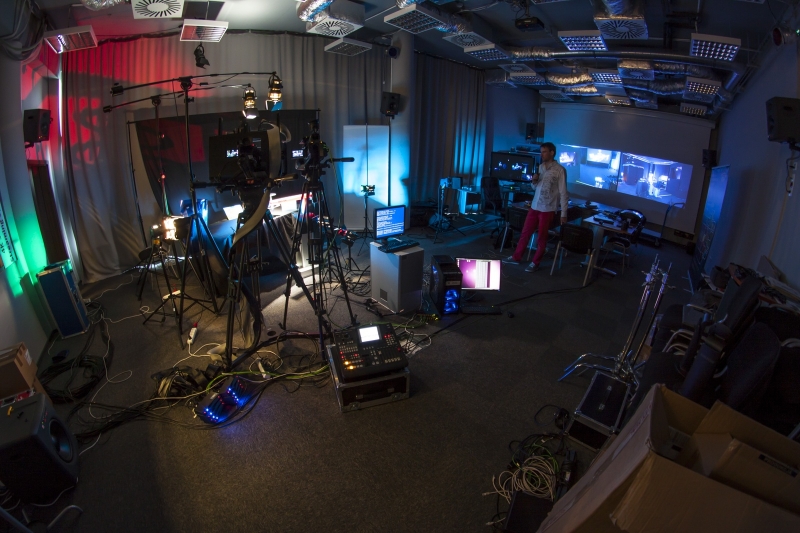
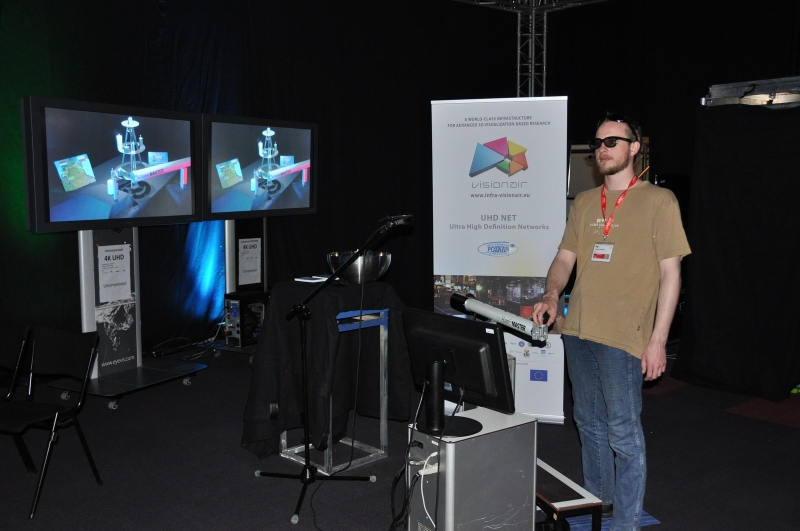
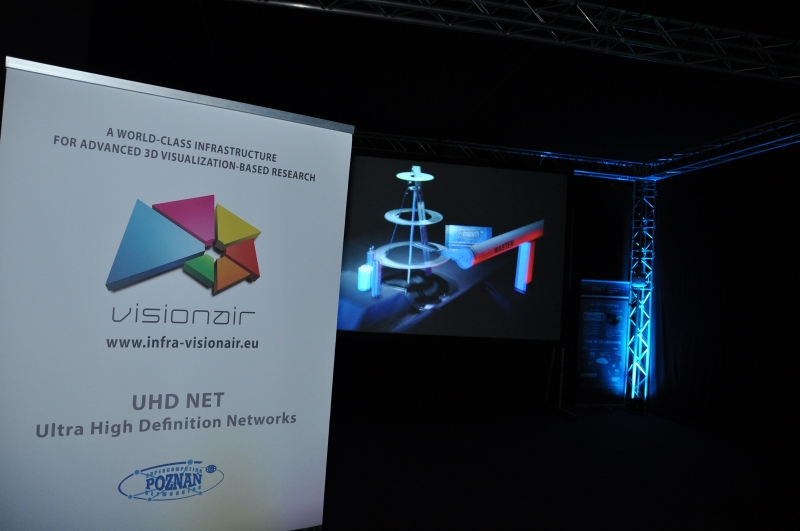
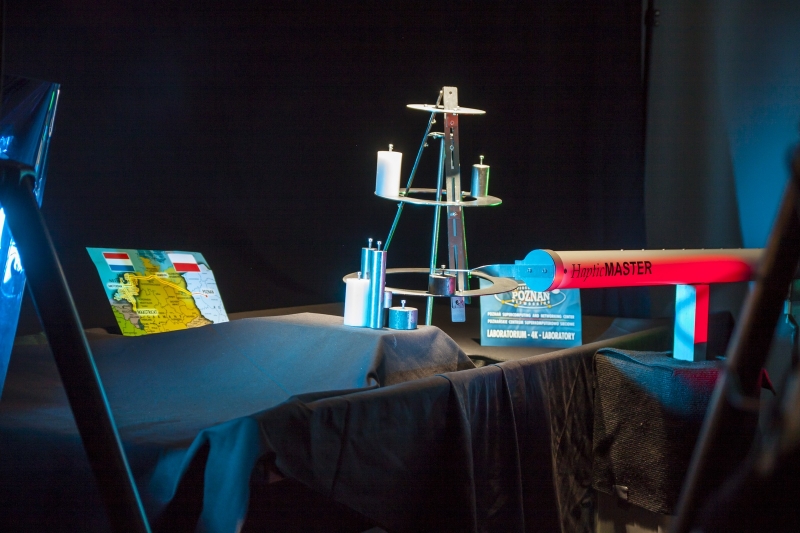
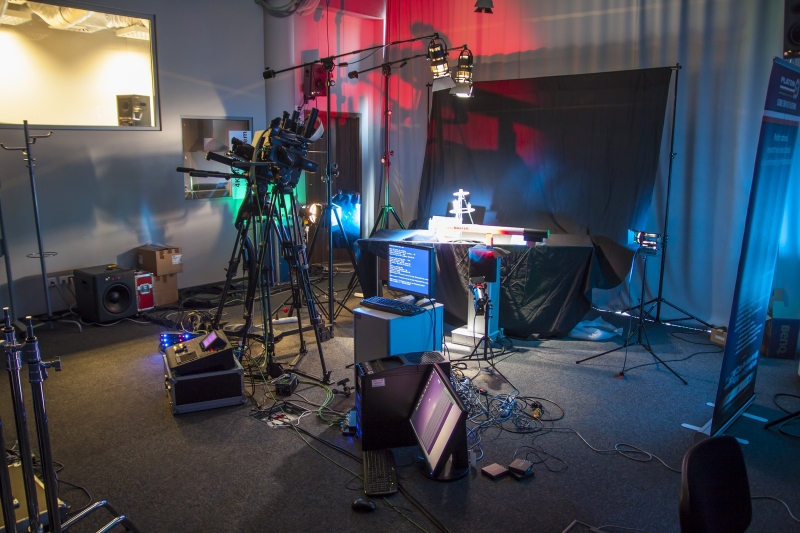
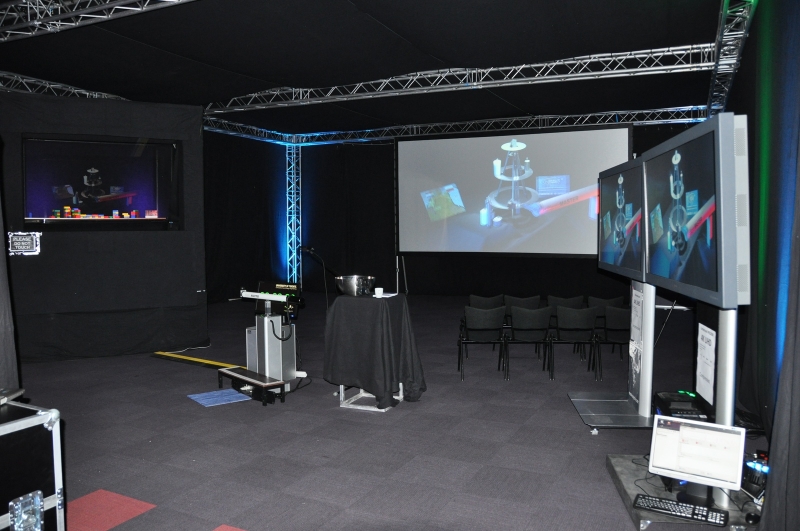
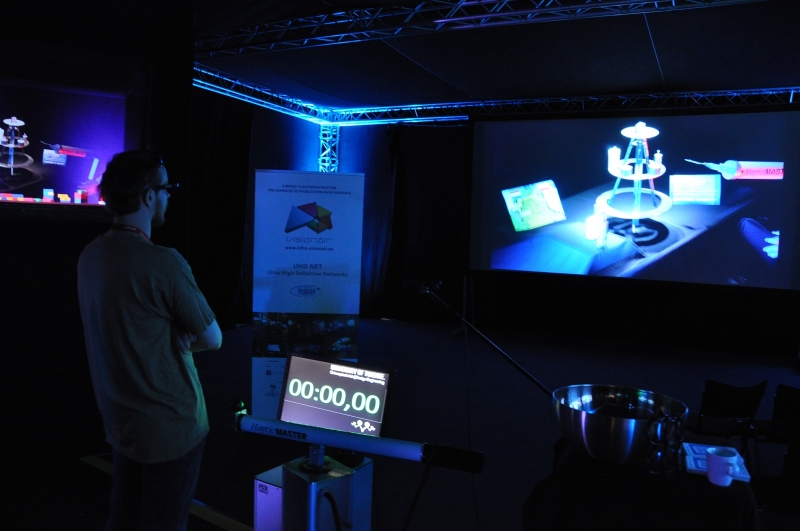
.

VISIONAIR / Grenoble INP / 46 avenue Felix Viallet / F-38 031 Grenoble cedex 1 / FRANCE
Project funded by the European Commission under grant agreement 262044

Project funded by the European Commission under grant agreement 262044
